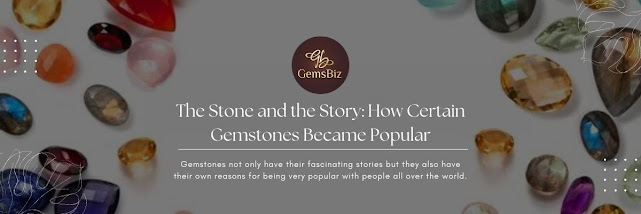The Stone and the Story: How Certain Gemstones Became Popular
Gemstones come in an array of colors, and it’s easy to see how some of them became popular with the people who used them over the centuries and across the globe. Amber, turquoise, amethyst, jade, and lapis lazuli have all been worn in one form or another since ancient times because they each bring something to the table when it comes to their beauty, symbolism, or practicality. However, other wholesale gemstone beads remain relatively rare in jewelry today despite being highly prized by many different cultures throughout history.
Opal - Australia
At first glance, these sparkling, iridescent stones look
like something a fairy might throw up after a long night of drink. They come in
every color under the rainbow, too. That’s partly why they’re so popular—just
about anyone can find an opal with their favorite color scheme. But there’s
more to it than that. For example, Opals
are made of solidified water, and opal is one of Australia’s national
treasures.
Ruby - India
Ruby is a red
gemstone that is still very much associated with India. In ancient times, it
was believed that wearing ruby jewelry could help strengthen our eyesight. Some people believe that rubies are even
capable of warding off evil spirits! These days, they’re most often seen in
engagement rings or as accent stones in more elaborate pieces of jewelry.
Sapphire - Burma (Myanmar)
Burma (Myanmar) is thought to be one of Sapphire’s first use
locations. Ancient Roman historian Pliny mentions it in his writings. Burma
(Myanmar) also holds some of Sapphire’s largest deposits. This area has been
mined for over a thousand years, with a well-established trade network that
continues to export stones even today. India, Greece and Rome were where Sapphire began its journey to becoming
a popular gemstone. It was used as early as the 7th century. In ancient times
people were worn sapphire as jewelry and used this in other adornments.
Emerald - Colombia
The word Emerald
comes from Greek origins and means green stone. In Colombia, where most of the
world’s emeralds are mined, these colorful stones are still referred to as
Esmeraldas, which means green stones. Emerald is a popular gemstone for many
reasons. It is extremely durable and because it has a high refractive index, it
can be cut into beautiful shapes that make it easy to set in jewelry. Emerald
also has a rich history that dates back thousands of years, but Emerald is
famous for its octagon shape.
Amethyst - Brazil
Brazil is by far one of the world’s largest producers of Amethyst. Though there are a few
precious-gem quality mines scattered throughout South America, most amethyst
comes from the Rio Grande do Sul. This region of Brazil boasts more than 100
different gem-quality mines. In fact, it’s estimated that over 90% of all commercial
amethyst in today’s market originates from one mine located in Ametista do Sul,
Brazil. The reason for its popularity
can be traced back to ancient Greece where amethyst was worn as protection
against intoxication. The Greeks believed that wine would turn into water when
held against an amethyst—and since the water was considered sacred, they
believed wearing amethyst would help prevent drunkenness.
Onyx- California
One of California’s largest gem deposits was located in San
Diego County, where a vast amount of black onyx was found. In addition to being worn as jewelry, it is also used in
carving artistic pieces. The stone is now extinct in California. Today, most
onyx comes from Brazil or India.
There are several types of onyx to choose from, each with
its own unique look and feel. Black onyx has deep gray tones with an appearance
similar to mother-of-pearl. It can range from pale gray to dark charcoal.
Peridot - Myanmar, Pakistan
Peridot, a
variety of olivine, is commonly found in Mexico, Pakistan, the U.S., and
Hawaii. Some of these locales produce a particularly green-colored peridot
gemstone which gets its color from an iron oxide inclusion within it. The most
brilliant colored green peridot come from Pakistan and Sri Lanka—where they
were often mistaken for emeralds due to their richness in coloration.
Jade, Jadeite & Nephrite - China
Jadeite is made up of jade-colored
quartz, while nephrite is green. It’s believed that people in China were
carving Jadeite as far back as 5000 B.C. In fact, it was considered a symbol of
royalty for many years. In modern times, it’s still seen as a status symbol in
some Asian countries like China.
Conclusion
In conclusion, gemstones not only have their fascinating
stories but they also have their own reasons for being very popular with people
all over the world. As long as you can keep yourself updated about your
favorite gemstone, no matter which one it is, you will never feel lonely and
you can easily get help from others. Buy wholesale Gemstones and add them to your jewels to spark and see how they
are so helpful in your life.




Comments
Post a Comment